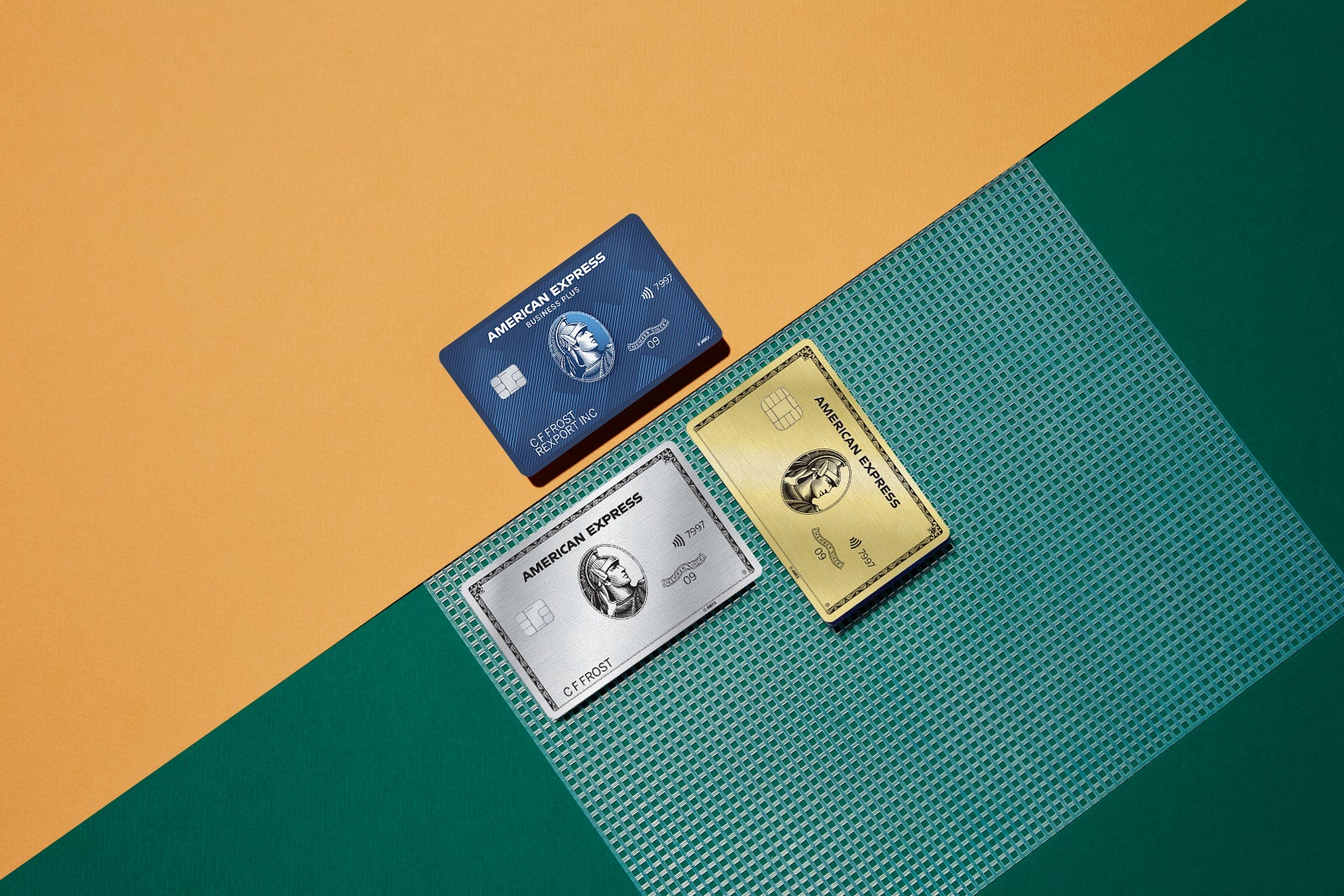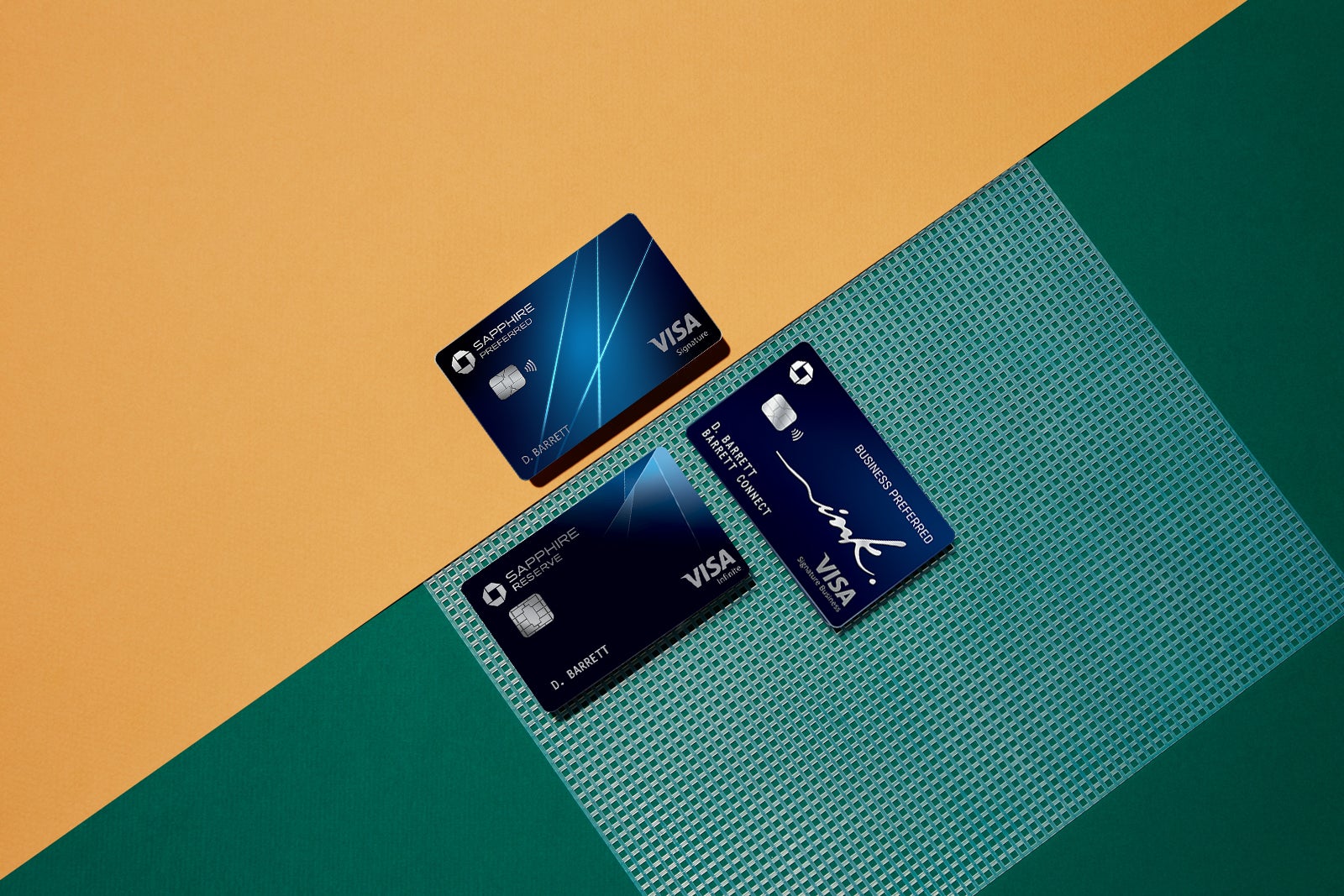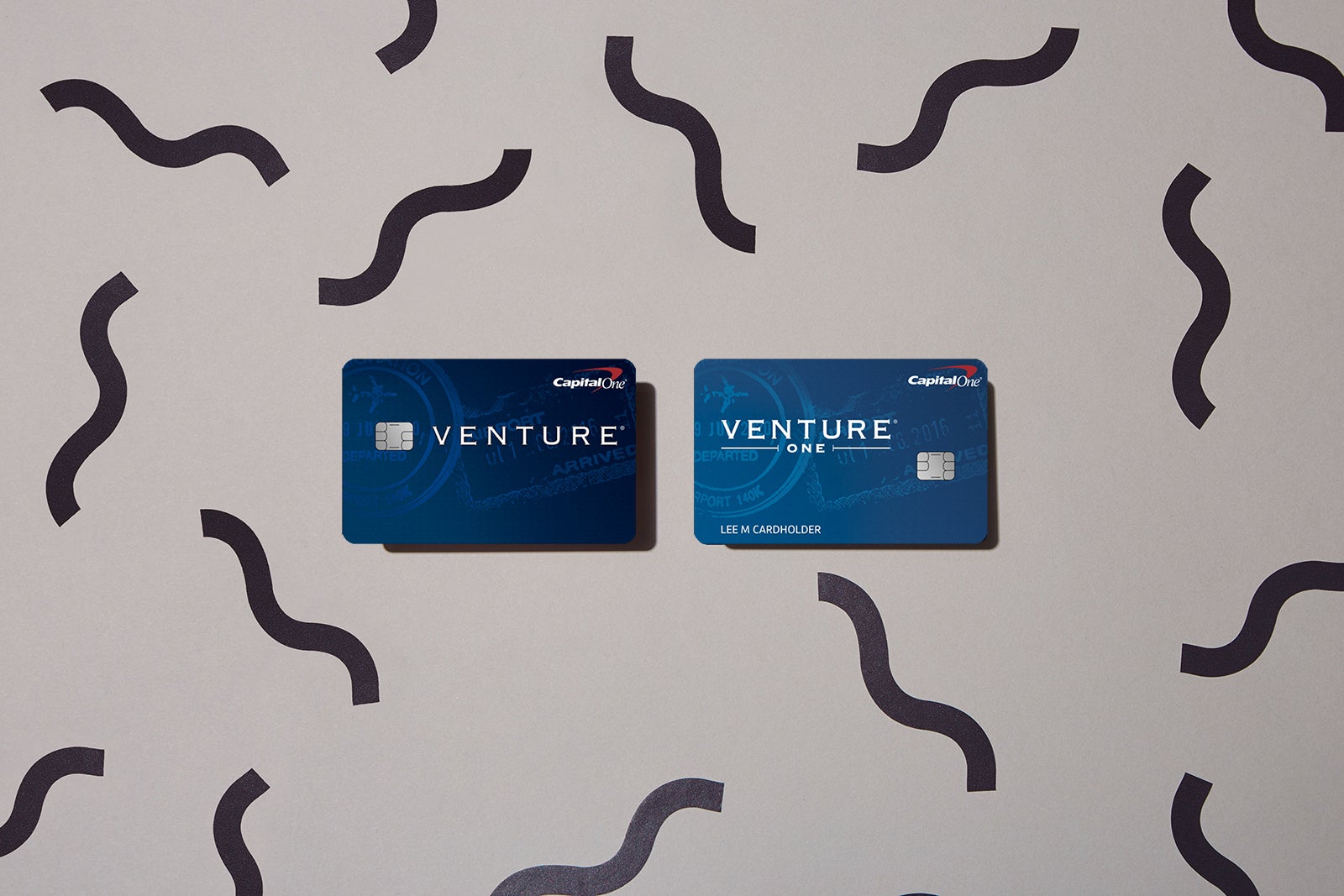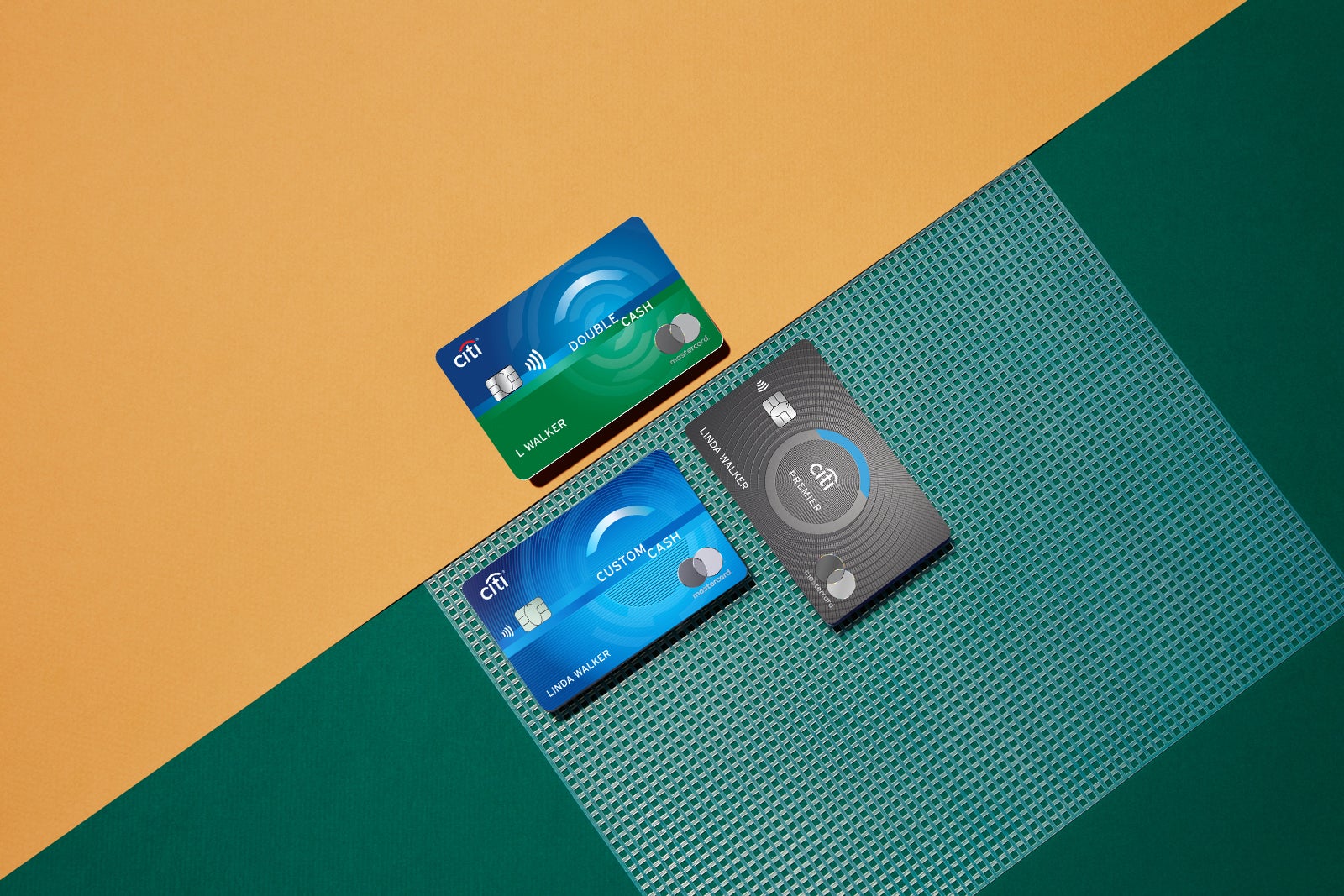When considering your next credit card, it’s best to first look at your wallet and see if you can build a strategy around what you’ve already got. Chances are, it can be more beneficial to hone in on earning points from the same issuer rather than spreading yourself too thin across multiple programs.
There are plenty of other solid reasons why you would want to consider carrying multiple cards from the same issuer:
- Earn more welcome offers.
- Access to more bonus categories that complement each other.
- Some points become even more valuable when you own multiple cards in the same family.
- You can get around certain application eligibility rules.
- Enjoy more benefits, such as a higher level of travel and shopping protections.
- You don’t have to juggle multiple log-ins and account information.
With that said, let’s review the credit card options with transferable points you can combine and how to strategize by carrying multiple cards in the same family.
In This Post
American Express

Known as the “Amex Trifecta,” these three cards are essential for those who want to earn thousands of Membership Rewards points each year. While they’re great standalone cards, you’ll want to add these other options thanks to their complementary rewards rates:
| Card | Welcome bonus | Earning rate | Annual fee |
| The Platinum Card® from American Express | Earn 100,000 Membership Rewards points after you spend $6,000 on purchases on your new card in your first six months of card membership.
Plus, earn 10 points per dollar on eligible purchases on your new card at restaurants worldwide and when you shop small in the U.S. on up to $25,000 in combined purchases, during your first six months of card membership. That’s an additional 9 points on top of the 1 point you earn for these purchases. |
5x on flights purchased directly with the airline or with Amex Travel, on up to $500,000 spent per calendar year.
5x on prepaid hotels booked on Amex Travel. 1x on other eligible purchases. |
$695 (see rates & fees) |
| American Express® Gold Card | Earn 60,000 Membership Rewards points after you spend $5,000 on purchases on your new card in your first six months of card membership. | 4x on dining at restaurants.
4x on U.S. supermarkets, on up to $25,000 spent per calendar year (then 1x). 3x on flights booked directly with the airline or with Amex Travel. 1x on other eligible purchases. |
$250 (see rates & fees) |
| The Blue Business® Plus Card from American Express | Earn 15,000 Membership Rewards points after you spend $3,000 on purchases on your new card in your first three months of card membership. | 2x on the first $50,000 per calendar year (then 1x).
1x on all other eligible purchases. |
$0 (see rates & fees) |
Earn those massive welcome bonuses
Amex has a once-per-lifetime rule that restricts you from earning a welcome bonus more than once per card. However, you can open all three of these cards eventually and earn each of their welcome bonuses — so long as you haven’t held the card beforehand — and continue to add to your points balance.
Added together, these three welcome bonuses are substantial, giving you at least 175,000 bonus points — worth an astounding $3,500 by TPG valuations — if you meet spend requirements. Plus, the Amex Platinum’s restaurant and Shop Small bonus in the first six months of card membership is significant — if maximized, that’s an additional 250,000 Membership Rewards points.
Earning rates that cover your ground
Each card offers excellent earning rates that can combine to offer bonus points on virtually every purchase you’ll have in life. Here’s a cheat sheet of when to use each card:
| Purchase | Card to use |
| Flights | Amex Platinum for 5x until you meet the $500,000 threshold per calendar year. From there, you can use the Amex Gold for 3x. |
| Hotels | Amex Platinum for 5x. |
| Dining at restaurants | Amex Platinum for 10x up to the $25,000 threshold during the first six months of card membership, then Amex Gold for 4x. |
| Supermarkets | Amex Gold for 4x up to the $25,000 threshold per calendar year — and at U.S. supermarkets only (then 1x). For groceries purchased abroad, Amex Blue Business Plus up to the $50,000 threshold per calendar year for 2x (then 1x). |
| All other purchases (gas, bills, etc.) | Amex Blue Business Plus for 2x up to the $50,000 threshold per calendar year (then 1x) |
Related: 5 ways you might be eligible for a business credit card without realizing it
Chase

The Chase trifecta is well-known across the points and miles community and is a powerhouse trio of cards.
All of the no-annual-fee options listed below are cash-back cards but earn rewards in the form of Ultimate Rewards points. These points are worth only 1 cent each unless you also carry an “anchor card” that can potentially raise the value of these points.
Your anchor card options are the Chase Sapphire Reserve ($550 annual fee), Chase Sapphire Preferred Card ($95 annual fee) or the Ink Business Preferred Credit Card ($95 annual fee). With the Sapphire Reserve, your Ultimate Rewards points are worth 1.5 cents each when booking travel through Chase Ultimate Rewards. With the latter two, your points are worth 1.25 cents each for travel through Ultimate Rewards.
Where the real value of these Chase anchor cards comes into play is access to Chase’s 11 airline and three hotel transfer partners — and your points can be worth 2 cents each when redeemed this way, according to TPG’s valuations.
Long story short, there’s lots of flexibility with the Chase trifecta, and you can mix and match the cards you want based on your preferences. Here are all of your options:
| Card | Sign-up bonus | Earning rate | Annual fee |
| Chase Sapphire Reserve | Earn 50,000 Ultimate Rewards points after spending $4,000 in the first three months of account opening. | 10x on hotels and car rentals purchased through Ultimate Rewards portal after the first $300 is spent on travel purchases annually.
10x on Chase Dining purchases through Ultimate Rewards portal. 10x on Lyft (until March 2022). 5x on flights purchased through Ultimate Rewards portal after the first $300 is spent on travel purchases annually. 3x on all other travel and dining purchases. 1x on all other eligible purchases. |
$550 |
| Chase Sapphire Preferred | Earn 60,000 Ultimate Rewards points after spending $4,000 in the first three months of account opening. | 5x on travel purchased through Ultimate Rewards portal excluding hotel purchases that qualify for the $50 Anniversary hotel credit.
5x on Lyft (until March 2022). 3x on select streaming services and online grocery store purchases. 3x on dining. 2x on all other travel purchases. 1x on all other eligible purchases. |
$95 |
| Ink Business Preferred Credit Card | Earn 100,000 Ultimate Rewards points after spending $15,000 in the first three months of account opening. | 3x on the first $150,000 spent in combined purchases each account anniversary year from the following categories: shipping, internet, cable and phone services, advertising purchases and travel (then 1x).
1x on all other eligible purchases. |
$95 |
| Ink Business Unlimited Credit Card | Earn $750 cash back (or 75,000 Ultimate Rewards points) after you spend $7,500 on purchases in the first three months from account opening. | 1.5% on all eligible purchases. | $0 |
| Ink Business Cash Credit Card | Earn $750 cash back (or 75,000 Ultimate Rewards points) after you spend $7,500 on purchases in the first three months from account opening. | 5% on the first $25,000 spent in combined purchases each account anniversary year from the following categories: office supply stores, internet, cable and phone services (then 1x).
2% on the first $25,000 spent in combined purchases each account anniversary year from the following categories: gas and restaurants (then 1x). 1% on all other eligible purchases. |
$0 |
| Chase Freedom Unlimited | Earn $200 cash back (or 20,000 Ultimate Rewards points) after you spend $500 on purchases in the first three months from account opening.
Plus, earn 5% cash back on grocery store purchases (not including Target or Walmart purchases) on up to $12,000 spent in the first year. |
5% on travel purchased through Ultimate Rewards portal.
3% on dining. 3% on drugstore purchases. 1.5% on all other eligible purchases. |
$0 |
| Chase Freedom Flex | Earn $200 cash back (or 20,000 Ultimate Rewards points) after you spend $500 on purchases in the first three months from account opening.
Plus, earn 5% cash back on grocery store purchases (not including Target or Walmart purchases) on up to $12,000 spent in the first year. |
5% on up to $1,500 in combined purchases in bonus categories each quarter you activate.
5% on travel purchased through Ultimate Rewards portal. 3% on dining. 3% on drugstore purchases. 1% on all other eligible purchases. |
$0 |
Chase application rules
Chase’s 5/24 rule is among the most restrictive of any issuer, and that’s because you likely won’t be eligible for anyChase card if you’ve opened five or more credit cards from any and all issuers in the past 24 months. The 5/24 rule incentivizes applicants to start within the Chase family first, and we strongly recommend building your trifecta of Chase cards — not only to supercharge your earnings — but because you may become ineligible if you open other cards first.
Finally, it’s worth noting that you can only carry one of the Sapphire cards at a time. So, if you don’t have either already, now’s the time to decide between the premium Sapphire Reserve or the wallet-friendly Sapphire Preferred.
Chase trifecta combinations
While there are traditionally three cards in the Chase trifecta, you could theoretically open more than just three Chase cards down the road for more sign-up bonuses and access to even more bonus categories. Here are some of the ways you can mix-and-match the Chase trifecta to fit your needs:
- Chase Sapphire Reserve (or Chase Sapphire Preferred)
- Ink Business Preferred (and/or Ink Business Unlimited/Ink Business Cash)
- Chase Freedom Unlimited (and/or Chase Freedom Flex)
No matter which combination you choose, be sure also to hold one flat-rate earning card (Ink Business Unlimited or Chase Freedom Unlimited) that will allow you to earn 1.5% on all non-bonus purchases.
Related: Best Chase credit cards of 2021
Capital One

Capital One is newer to the transferable points game, but there’s a lot to love about the program already. The two “anchor” cards that give you access to transferable Capital One miles are the Capital One Venture Rewards Credit Card and the Capital One VentureOne Rewards Credit Card.
From there, you can open one of Capital One’s Savor cash-back cards to take advantage of bonus categories and turn your rewards into Capital One miles.
| Card | Sign-up bonus | Earning rate | Annual fee |
| Capital One Venture Rewards Credit Card | 60,000 bonus miles when you spend $3,000 in the first three months of account opening. | 2 miles per dollar on all purchases. | $95 |
| Capital One VentureOne Rewards Credit Card | 20,000 bonus miles when you spend $500 in the first three months of account opening. | 1.25 miles per dollar on all purchases. | $0 |
| Capital One Savor Cash Rewards Credit Card | $300 cash bonus when you spend $3,000 in the first three months of account opening. | 4% on dining, entertainment and popular streaming services.
3% at grocery stores. 1% on all other eligible purchases.
|
$95 |
| Capital One SavorOne Cash Rewards Credit Card | $200 cash bonus when you spend $500 in the first three months of account opening. | 3% on dining, entertainment, popular streaming services and grocery stores.
1% on all other eligible purchases. |
$0 |
The information for the Capital One Savor has been collected independently by The Points Guy. The card details on this page have not been reviewed or provided by the card issuer.
Capital One application rules
Capital One restricts you to having no more than two of its personal cards open at once, so be sure to choose wisely.
Besides this two-card rule, you can only apply for a new Capital One card every six months. It’s important to be mindful of these restrictions to maximize your approval odds and think long-term on your cards strategy.
Maximize your everyday purchases
Let’s say you decide to open the Capital One Venture for its 2x earning on all purchases. While this is a great rewards rate (and is incredibly easy to remember), you may want to add the Savor to your wallet to earn an additional (above what you’d earn with the Venture) 2% on dining, entertainment, and popular streaming services and 1% on grocery stores. Since these are common purchase categories, you’ll have a powerful duo of cards that will help you accrue Capital One miles quickly.
The Capital One miles program keeps on improving, as there’s an ever-expanding portfolio of 15+ transfer partners.
Related: Tips and tricks to get maximum value from your Capital One miles
Citi

Last but not least, Citi presents some interesting options that are worthy of consideration.
Currently, only one “anchor” card is open for applications and allows you to earn fully transferable Citi ThankYou points: the Citi Premier® Card. The premium Citi Prestige® Card has been discontinued this year.
The information for the Citi Prestige has been collected independently by The Points Guy. The card details on this page have not been reviewed or provided by the card issuer.
If you’ve already got either the Premier or Prestige, you should add one of the cash-back cards in Citi’s lineup so you can maximize your earnings with more bonus categories, but still access Citi’s transfer partners:
| Card | Sign-up bonus | Earning rate | Annual fee |
| Citi Premier® Card | 80,000 Citi ThankYou points after spending $4,000 in the first three months of account opening. | 3x at restaurants, supermarkets, gas stations, air travel and hotels.
1x on other eligible purchases. |
$95 |
| Citi® Double Cash Card | None. | 2% cash back; 1% when you buy and 1% as you pay. | $0 |
| Citi Custom Cash℠ Card | $250 cash back (or 25,000 Citi ThankYou points) after spending $750 in the first three months of account opening. | 5% on your top eligible spend category up to $500 spent each billing cycle. Categories include restaurants, gas stations, grocery stores, select travel, select transit, select streaming services, drugstores, home improvement stores, fitness clubs or live entertainment, then 1%.
1% on all other eligible purchases. |
$0 |
Timing of applications
If you have the Citi Premier and want to apply for either the Double Cash or Custom Cash, note that you can apply for a new Citi card every eight days — and no more than two cards in a 65-day window.
Strategize your earnings
The best part is these supplemental cards have no annual fee but attractive earning rates that go well with the Premier’s (already excellent) rewards rate. If you’re looking for a flat-rate, 2x earning card for non-bonus purchases, go for the Double Cash, while the Custom Cash is a great pick for a whopping 5% return on non-traditional bonus categories.
Related: Best Citi cards of 2021
Bottom line
When you own one card that earns transferable points — more likely than not — you can add another card from the same issuer to beef up your earnings effortlessly. It’s as easy as using a two- or three-card strategy and pooling your rewards into one account.
Official application link: Amex Platinum.
Official application link: Amex Gold.
Official application link: Amex Blue Business Plus.
Official application link: Chase Sapphire Reserve.
Official application link: Chase Sapphire Preferred.
Official application link: Ink Business Preferred.
Official application link: Ink Business Unlimited.
Official application link: Ink Business Cash.
Official application link: Chase Freedom Unlimited.
Official application link: Chase Freedom Flex.
Official application link: Capital One Venture.
Official application link: Capital One VentureOne.
Official application link: Capital One SavorOne.
Official application link: Citi Premier.
Official application link: Citi Double Cash.
Official application link: Citi Custom Cash.
For rates and fees of the Amex Platinum, click here.
For rates and fees of the Amex Gold, click here.
For rates and fees of the Blue Business Plus, click here.
Featured photo by Isabelle Raphael for The Points Guy.
No comments:
Post a Comment